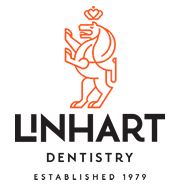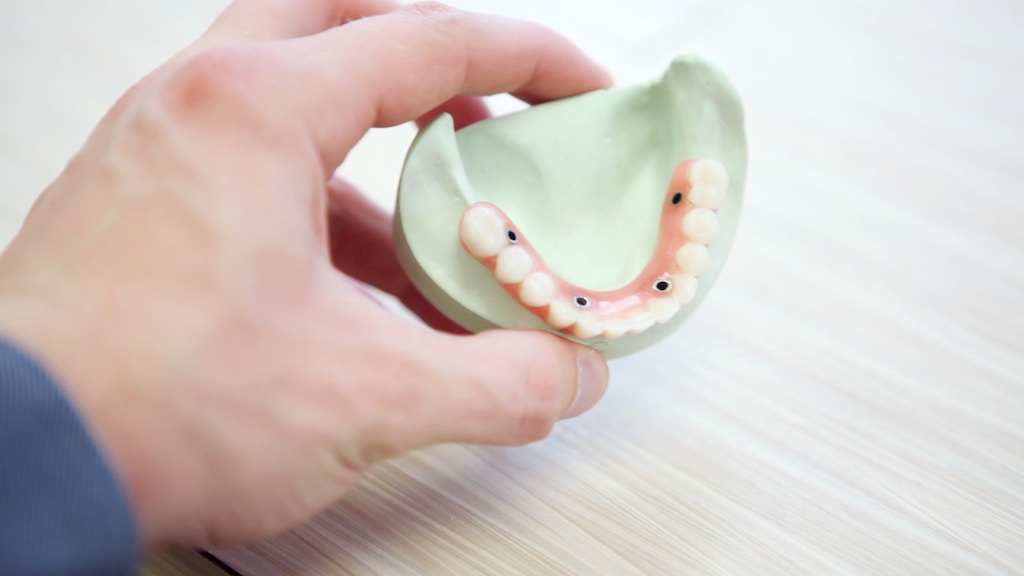
It’s completely normal to feel apprehensive after getting the news from your dentist that you’ll need your wisdom teeth removed – especially given this news is often received during your teenage years or early twenties.
But facts will always remain facts so let’s look at some of them.
1. Do You Really Need To Get Your Wisdom Teeth Removed?
Unlike carnivores, human beings have smaller jaw spaces and once the wisdom teeth get in there, it starts affecting chewing and speaking.
This is because most times, they don’t fully erupt and become impacted. If you want to identify them, check if you have any third molars, yep, that’s it.
The wisdom teeth begin to affect the second molars after some time, so removing them before that happens is usually a recommended option.
And if you want to know why our jaws can’t accommodate the teeth, it’s all down to the vitamin K2. This vitamin facilitates the transfer of calcium from the body into the bones.
Calcium is needed for proper development of the teeth and if you’re not getting enough of it, apart from putting you at the risk of being affected with certain dental conditions, you can also develop osteoporosis, which is a condition where your bones can be very easily fractured.
2. What If I Don’t Want Them Removed?
Apart from damaging other teeth, you also stand the chance of getting your other teeth decayed. Here’s how this works, remember I said wisdom teeth can affect your normal bite? When this occurs, the teeth combine with your second molar to create a pit in your mouth where food is trapped.
Tiny particles of this food become difficult to get rid of and harmful bacteria feast on it and you get plaque that if still not removed, degenerates into tartar and starts attacking your enamel creating holes in them.
All of these don’t affect you if you were born without wisdom teeth. If that’s you, just know you’re fine but there are more people with wisdom teeth than those without and that’s why you should check. This can lead to gum disease and other dental diseases of the mouth.
3. When Should I Get My Wisdom Teeth Removed?
Extraction is always easier if it’s done before the roots are fully formed. Doing it at that time also reduces the duration of recovery from surgery and the associated pain.
The roots firmly implant the teeth into their sockets so that’s why it’s always better to get the process done early.
4. What is the Typical Recover Time from Removal of Wisdom Teeth?
One week is a good rule of thumb to have in mind. Your nutrition during this time also contributes to its length, try to stay away from foods that make your teeth sensitive. Your dentist will likely advise that very cold or hot food are a bad idea as they can cause pain at the extraction site.
5. Any Questions I Can Ask The Dentist?
Sure. So you’re comfortable with the entire process, you should ask questions like:
- how many of your wisdom teeth need to be removed?
- what type of anesthesia will be recommended for you, local and sedation anesthesia are common types?
- what should you do if you develop dry sockets?
- how often you need to change the gauze pads?
- what you should be thinking about for a post operative diet?
Armed with this information you should be well on your way to a smooth wisdom tooth removal procedure.

Paleo diets are a big deal these days. Books on the diet seem to be everywhere, and searching “Paleo diet” in Google pulls up over 17 million results. And no wonder it’s so popular. The Paleo diet has been touted to help cut down on preservatives, help people lose weight and contains anti-inflammatory benefits from increased plant nutrients. It’s even supposed to help the teeth and gums. So below is your guide to Paleo diet dental health.
What is The Paleo Diet’s Link to Teeth?
To start, the Paleo diet aims to match what we believe mankind used to eat before agriculture was invented. There’s plenty of academic debate about what cavemen used to actually eat, but the paleolithic diet seeks to limit agricultural food nonetheless. Anything that seems like it would have been in a hunter-gatherer diet or plant-based diet is included.
That means people on a Paleo diet eat:
• Lean meats
• Seafood
• Fresh fruit
• Non-starchy veggies like lettuce, green beans, broccoli, cauliflower and spinach
• Nuts
• Seeds
• Eggs
• Plant-based oils like olive oil
People on a Paleo diet can’t eat:
• Grains
• Starchy veggies like potatoes
• Legumes or beans
• Dairy
• High-fat meats like ribs or pepperoni
• Sugar
• Processed foods
• Salty foods
By now you may be wondering what this has to do with teeth, exactly. Our modern diets are what create many of the problems for our teeth and gums including gum disease. The bacteria in our mouth feed off of starchy food and sugar in particular, which creates acids. This acid, in turn, erodes the enamel of our teeth, which can lead to cavities. And the Paleo diet cuts out starchy food and processed sugar.
In fact, a study in the Journal of Periodontology looked at 10 people who lived in an environment replicating the Stone Age for four weeks.
As you can imagine, plaque and overall bacteria counts increased, so dentist appointments and cleaning are still important. But gum bleeding on probing decreased and gum pockets decreased. What this suggests is that the Paleo diet has some positive impacts on dental health.
What’s more, examination of old European hunter-gatherer dental samples shows fewer signs of cavities and periodontal disease than we have now. It wasn’t until widespread agriculture that the bacteria in the mouth shifted to the kind that is associated with disease. And the bacteria that cause tooth decay become dominant around the Industrial Revolution.
Granted it’s not all rosy. NPR reported that a cave in Morocco contained hunter-gather skeletons with teeth that were in horrible condition.
Just about everyone had cavities.
Turns out these people had a diet high in acorns, which are high in carbohydrates and stick to the teeth. So not all hunter-gathers were paragons of dental health. But it does make a case for achieving strong dental health through the Paleo diet, as the Moroccan cave dwellers’ downfall was through carb-based foods.
Paleo diet dental health with Dr. Weston A. Price
You won’t find Dr. Weston A. Price with his own health talk show or posting broad smiles on Instagram. Because he was a dentist from the 1930s in Cleveland. Yet his findings live on in the Weston A. Price Foundation.
He traveled all over the world looking for areas that have remained isolated from Western influence: indigenous North and South Americans, Gaelic communities in the Outer Hebrides, African tribes and Australian Aborigines, to name a few. And these communities had healthy, beautiful teeth.
According to The Weston A. Price Foundation
When Dr. Price analyzed the foods used by isolated peoples he found that, in comparison to the American diet of his day, they provided at least four times the water-soluble vitamins, calcium and other minerals, and at least TEN times the fat-soluble vitamins, from animal foods such as butter, fish eggs, shellfish, organ meats, eggs and animal fats—the very cholesterol-rich foods now shunned by the American public as unhealthful. These healthy traditional peoples knew instinctively what scientists of Dr. Price’s day had recently discovered—that these fat-soluble vitamins, vitamins A and D, were vital to health because they acted as catalysts to mineral absorption and protein utilization.
Because of the nutrients involved with Paleo diet dental health, maybe it’s time to consider getting back to a purer diet.
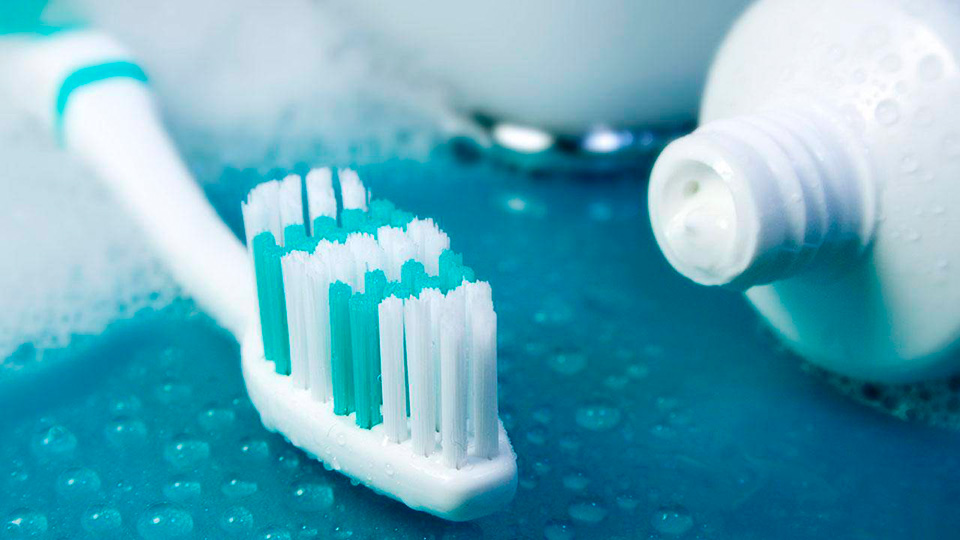
Most of us already know that brushing twice a day can reduce cavities, visiting a dentist near you regularly is important and fluoride is vital for dental health. However, there are also plenty of facts about oral health and hygiene that might surprise you. Here are the top five:
1. Your Spit Could Fill 2 Swimming Pools
The next time you find yourself salivating over a particularly tasty dish, remember that you’re contributing to the incredible amount of saliva produced over your lifetime. The average adult will produce just over 25,000 quarts over the course of their life, which is enough to fill up two whole swimming pools.
2. You Miss One-Third of the Surface When Brushing Your Teeth
Even if you’re careful to brush after every meal, replace your toothbrush often and pick a soft-bristled brush, you might still only be cleaning only two-thirds of your teeth. That’s because one-third of the total surface area of your teeth is unreachable by a toothbrush. Thankfully, flossing can tackle that remaining third and help you achieve complete dental hygiene.
3. Your Toothbrush Can Get You Sick
The general rule of thumb is to replace your toothbrush at least once every three months. After catching a cold or having the flu, however, you should change your toothbrush right away. The bacteria left behind from when you were ill could re-infect you after the fact and get you sick all over again.
4. 80% of Americans Have Gum Disease
Shockingly, a whopping 80 percent of Americans have some kind of gum disease. Sore gums, gums that bleed when you brush or gums that are painful to floss are all signs of gum disease. Frequent brushing and flossing can help reduce your chance of gum disease in the future.
5. Enamel is the Strongest Part of Your Body
No matter how much time you spend working out at the gym, your muscles still aren’t the strongest part of your body. You might be surprised to learn that it’s the enamel on your teeth that’s the toughest substance in the human body.
Although most people think they know all about the basics of dental health, there are still plenty of surprising facts out there. From your impressive saliva production to the potential health hazard of a toothbrush, share these facts with your friends to enjoy some shocked faces.
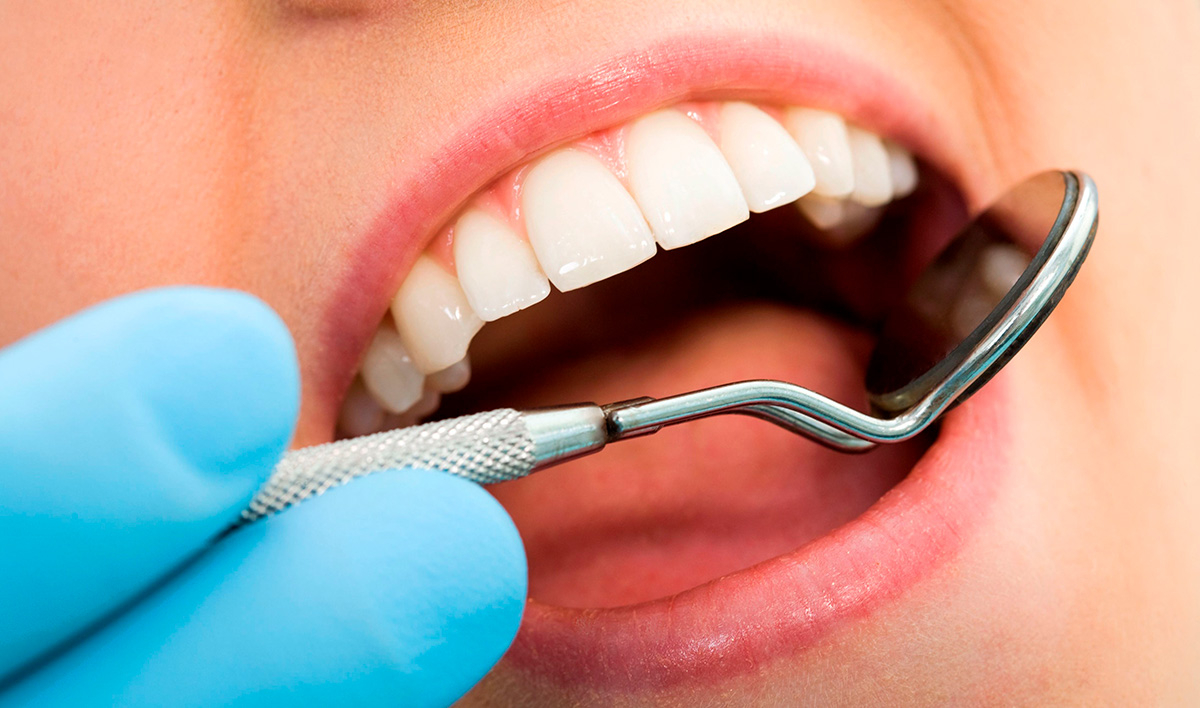
It is not unusual to read or talk about the importance of proper oral hygiene, but not everyone inherently knows what that entails. Even adults who have been visiting their local dentist for years might not fully understand what tasks should be included in their everyday schedule. For ideal dental hygiene, this is what your daily oral health routine should look like
Brush Your Teeth at Least Twice Each Day
The backbone of a great dental health routine is brushing your teeth twice each day. You should always use a toothbrush that can easily reach the teeth in the back of your mouth, and it should be soft-bristled. Brush over all of the surfaces of your teeth, and be sure to use a toothpaste that contains fluoride.
Daily Flossing
Flossing on a regular basisis one of the habits that often gets overlooked by adults. Once a day, use at least 1 foot, or 12 inches, of dental floss. Hold one end of the floss in each hand and use it carefully along the gumline between every single tooth in your mouth. In some cases, it can be hard to reach certain teeth with dental floss. However, that’s no excuse to skip an area. A dental pick of some kind should be used instead.
Scrape Your Tongue Daily
Scraping your tongue is a key way to remove bacteria from your tongue. If you suffer from halitosis, or bad breath, this simple act can make a serious difference. Many toothbrushes have a tongue scraper attached to the back of the brush for your convenience or your can purchase a seperate tongue scraper like these from Healthy Top 10s.
Rinse With Mouthwash Daily
Mouthwash is an effective way of reducing plaque in your mouth, and it has been proven to reduce gum disease in many adults. Rinse with mouthwash once a day for up to 90 seconds, but be sure not to swallow the liquid.
Enjoy a Varied and Nutrient-Dense Diet
Believe it or not, the foods that you eat can also play a significant role in your dental hygiene. Either through diet or supplements, make sure that you are taking in key vitamins like calcium on a daily basis.
Along with visiting a local dentist in your area regularly, maintaining a daily routine is key for great dental health. Brushing twice daily, flossing, using mouthwash, eating a varied diet and scraping your tongue should all be used in conjunction for better oral health.
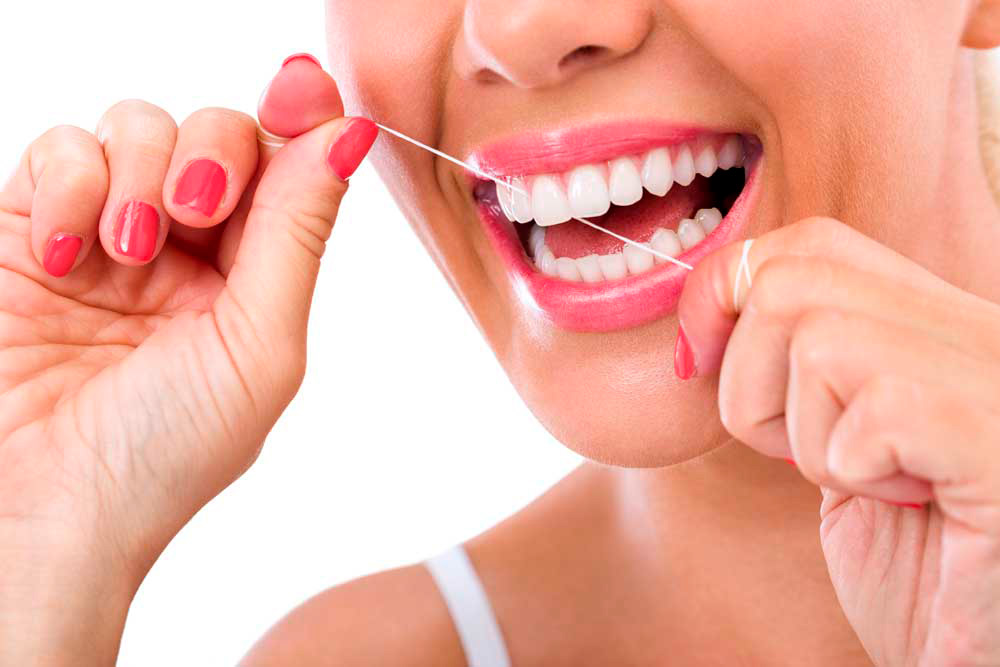
Healthy, well-maintained gums provide the foundation for strong adult teeth. Of course, taking care of your gums does more than just maintain stability for your teeth. Good dental care also helps prevent gum disease, which can cause oral health issues and can aggravate heart problems. No matter your age, you can take simple steps every day to improve the health of your gums and teeth. Start with these five essentials; then, ask your dentist what other steps you can take to protect your gums.
1. Stay On Top of Brushing and Flossing
Dentists recommend brushing your teeth at least twice a day after meals and flossing once a day. If you can, try brushing your teeth three times a day. Health officials in many countries suggest brushing your teeth before breakfast and about an hour after each meal. Avoid brushing your teeth immediately after you eat, especially if you’ve had acidic foods. You can floss at any time of the day; choose the same time every day to make flossing a habit.
2. Avoid Mouthwash with Alcohol
Many over-the-counter mouthwashes contain an enormous amount of alcohol. Avoid using these rinses as they can dry out the mouth and gums, leading to discomfort and encouraging the growth of bacteria. Opt for all-natural or alcohol-free mouthwashes instead and use them at least twice a day.
3. Eat A Healthy, Well-Balanced Diet
The American Dental Association and other medical groups have launched educational campaigns to explain that eating well can improve oral health. Choose plenty of fresh fruits, vegetables and whole grains. Avoid eating too many sweets as they can damage teeth and encourage the growth of bacteria.
4. Keep Your Tongue Clean
Your tongue is a great breeding ground for bacteria. To boost overall oral health, scrape your tongue twice every day with a tongue scraper. A specialized scraper will remove more bacteria than a regular toothbrush.
5. Stay Well-Hydrated
Drinking plenty of water helps your mouth and gums stay hydrated, which in turn helps control bacteria. If you’re in an office environment all day, try to drink one glass of water every hour. If you’re active, you’ll need to drink extra water to protect your gums and stay hydrated.
Remember that choosing a dentist in your area for regular checkups and cleanings is the cornerstone of good oral health. Your dentist can complete yearly oral health screenings and alert you to any early signs of gum disease. Starting a gum care regimen today is a great way to improve oral health and offset any early indicators of disease.
Making the decision to become a dentist represents an important commitment to helping others. As a dentist, you play an important role, not only in helping your patients preserve their smiles, but also in maintaining their overall oral health. Maintaining good oral hygiene is important to one’s physical health, but it also has implications for mental health as well. A healthy smile can contribute to good self esteem, making cosmetic dentistry just as vital to a patient’s dental care. Essentially, oral health is an integral part of a person’s general well being.
According to the American Dental Association (ADA), proper dental care is the most unmet health need in many communities and populations in America. By becoming a dentist, you’re joining a growing task force of professionals making a significant difference in people’s lives.
Why Become a Dentist?
Everyone becomes a dentist for their own reasons. For many, it is a passion for dentistry and a desire to help people that drives them. Patients are often incredibly loyal to their dentists, making it a personally rewarding field to work in, and the dental profession is highly respected. There are also a number of other benefits, including the flexibility that comes with owning your own practice. Dentists with their own practice are able to set their own hours, and while many do work full time, they are often able to have evenings and weekends off.
Dentistry is a growing field, with the Bureau of Labor Statistics projecting that the job outlook for dentists will grow by 16% percent by 2022. In 2012, the average annual salary for dentists was $149,310, making it a highly lucrative field as well.
Another enticing aspect of the profession is the numerous career options available. Aside from general dentistry, you can become a specialist or a cosmetic dentist. Dentists can also work in academia and research, contributing to the education of their peers and continued advancements in the profession. There are public health dentists who work directly with underserved communities to educate people about oral health, develop health policies, and prevent disease. The field of dentistry is so diverse that, regardless of your reason for pursuing a career, you can find a path that is right for you.
4 Steps to Becoming a Dentist
The path to becoming a dentist is nuanced, with the specific requirements for practicing varying on a state-by-state basis. However, there are some general steps all dentists must take in order to become qualified, licensed professionals.
1. Determine your area of professional interest
Most dental professionals are general dentists, caring for the overall oral health of their patients. However, an approximate 20% are specialists, practicing one of the nine specialties recognized by the ADA.
● Dental public healthworkers promote dental health and disease prevention in underserved communities.
● Endodontists perform root-canal therapy and restore or remove damaged or infected teeth.
● Oral and maxillofacial pathologists practice oral pathology, diagnosing oral diseases, such as cancer, that might have serious implications for the maxillofacial (face, jaw, and neck) region.
● Oral and maxillofacial surgeons perform surgery on the mouth, jaw, head, and neck to treat and repair injuries or defects.
● Oral and maxillofacial radiologists are specialists who use radiologic imaging to identify and diagnose conditions in the oral and maxillofacial region.
● Orthodontistscorrect the misalignment of teeth and malformation of jaw structure by applying pressure to the area with braces, iBraces, and Invisalign.
● Pediatric dentists focus on dentistry for children and special-needs patients.
● Periodontists treat the gums and bone supporting the teeth.
● Prosthodontists replace missing teeth with permanent fixtures, such as crowns and bridges or dental implants, or with removable fixtures such as dentures.
2. Apply to an accredited school of dentistry
All dentists must receive their education from an accredited school of dentistry. While specific requirements vary by school, most dental students need at least a bachelor’s degree with a certain number of credits in biology, chemistry, and other related sciences. Most schools require the ADA’s Dental Admission Test as part of the application process.
Students typically take classes in anatomy, periodontology, radiology, and anesthesiology, among other subjects. Dental school takes four years to complete, but pursuing a career in one of the nine specialties requires advanced education that may take an additional two or more years.
3. Complete your residency or additional training
A dental education includes practical training in a clinical setting under the supervision of a licensed dentist. Beyond this, general dentists usually do not require additional training. However, those pursuing a dental specialty must complete a one or two year residency program in that field.
4. Apply for licensure in your state
All states require dentists to obtain a license to practice, though specific requirements vary by state. In addition to a degree in dentistry, most states require dentists to pass a written and practical exam. Specialists must obtain licensure in their specialty.
While the road to becoming a licensed, practicing dentist is clear, the process requires dedication, hard work, and above all, passion. Please keep in mind that you must be licensed in the state where you wish to practice, and while education, a written examination, and a practical examination are universal to all states, specific requirements do vary. The state’s Board of Dentistry is the necessary entity to contact for information regarding your dental license. The ADA maintains a list of each state’s dental board.
Thanksgiving is a great time to reflect on all the things you are thankful for. The entire Dr. Linhart team would like to express its great thanks to all of our wonderful patients. We do what we do because of you! We are extremely lucky to have such a fabulous patient base, and we always look forward to seeing each and every one of you.
We hope you enjoy this holiday with lots of friends, family, and of course food.
Flossing your teeth is very important if you want to have better oral health. You should be making this a regular habit, which you do several times a day. Doing so will have defined benefits which will make your efforts very well worth it!
Five Reasons to Floss your Teeth
1 – Bad Breath
First of all, food which is trapped between your teeth will decay and leave your mouth smelling not as good as it could be. Flossing removes these elements and allows your breath to be as fresh as it can be.
2 – Gum Disease
Flossing is also useful because it stimulates the gums and allows you to scrape off corrosive elements which might be present. Clearing these spaces leaves the gums more vital and healthy.
3 – Tooth Decay
Flossing is also useful for preventing tooth decay. By getting rid of harmful elements which are decaying in the mouth, you will be removing corrosive elements which can eat away at teeth.
4 – Heart disease
Flossing is also great for preventing heart disease. Studies have shown that a healthy mouth is directly linked to a healthier heart.
5 – Your Smile
Last of all, the act of flossing helps you to have a beautiful smile which is more clean and clear. Making your smile beautiful is the outward manifestation of all of your efforts.
By making a positive habit out of flossing, you will have more control over your oral health. A beautiful healthy mouth can be yours with just a few minutes of effort every day!
Humans have 20 baby teeth followed by 32 permanent teeth, USUALLY!
The most commonly absent of the 32 adult teeth are the 2 maxillary (top) 3rd molars (aka Wisdom teeth). The second most commonly absent are 2 mandibular (bottom) 3rd molars (the other Wisdom teeth).
Some say that because 3rd molars are not useful to the adult dentition, and are often problematic (causing infection, pain, etc.), that humans are evolving beyond wisdom teeth and that is why either 1, 2, 3, or all 4 are sometimes absent.
I don’t know if a person should want all 4 present, and thus have wisdom, or have all 4 absent, and thus be evolved…
Just thought that would interest you.
-Zach
Recently there was a long cover article in the New York Times regarding the overuse of Conebeam CT scans in dentistry. This article brought up some of the negatives of these types of scans, primarily the amount of radiation associated with them. However, there are uses for these machines in dentistry, and when used appropriately, they provide diagnostic and planning information that cannot otherwise be obtained.
Radiation
The average digital panoramic radiograph in a dental office exposes the patient to about 8-15 μSieverts (μS) of radiation < a dental conebeam CT is anywhere from 10-100 μS, depending on the size of the scan area and location < a cross-America flight exposes a person to ~60 μS < a medical CT ~2000 μS < annual background radiation ~2500μS. Therefore, the amount of radiation actually received by patients during a conebeam CT scan is minimal when compared to the amount of background radiation a person gets in a year, ~50/2500 μS = 2%.
Pros
Conebeam CT scans give 3-dimensional images of hard structures in the head and neck region. That means they can let you see every aspect of the jaw, teeth, joint, skull, etc. You can see the distance of structures from one another, and the location of abnormalities. In dentistry, these scans are particularly useful in Implant dentistry. A conventional dental x-ray, whether a periapical (small) film or a panoramic (large) film, only give the dentist a 2-D picture of a structure. However in order to place an implant in the best location in bone, sometimes the third dimension is required in order to avoid missing the bone, hitting nerves, or severing arteries. Conebeam scans also are useful in endodontics (root canal therapy), orthodontics (tooth movement), and of course general dentistry. 3D images which allow cross-sectional viewing in dentistry are extremely useful tools that will allow dentists to be more precise in their procedures.
Cons
The only true con of these machines is the radiation. As discussed above, there is a significant dose delivered, however it is minimal in comparison to other medical scans and even normal activities like flying. The primary concern demonstrated in the NYT article about conebeams is their overuse. While these devices do have a great role, they should be used only when necessary. Not all implants require scans, most orthodontics and endodontics do not require them either. Therefore it is extremely important for dentists to properly diagnose when a conebeam CT is necessary for a patient.
Kodak 9000 3D Conebeam CT
Dr. Jan Linhart is proud to announce that he has recently added the Kodak 9000 3D Conebeam CT to his office. We chose the Kodak machine because it allows us to take a scan of a small area, thus giving it the lowest patient radiation dose of any conebeam on the market. In addition, the Kodak unit allows us to take independent digital panoramic x-rays without delivering the radiation dose of a conebeam. This is a unique feature that many other machines lack.
Dr. Linhart, as well as the specialists in our office including Dr. Roger Bronstein (periodontist), have been trained to identify exactly when a conebeam CT is necessary, and will only take scans when indicated! We encourage you to contact us with any questions or comments regarding this new addition to our office. I can be reached directly at Zachary@drlinhart.com
